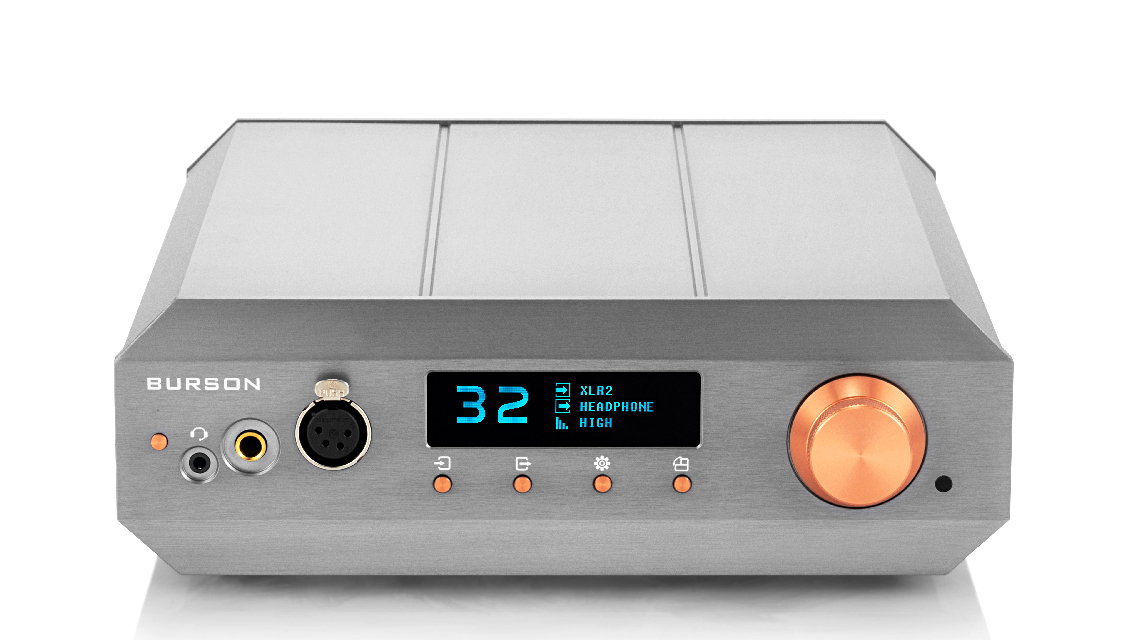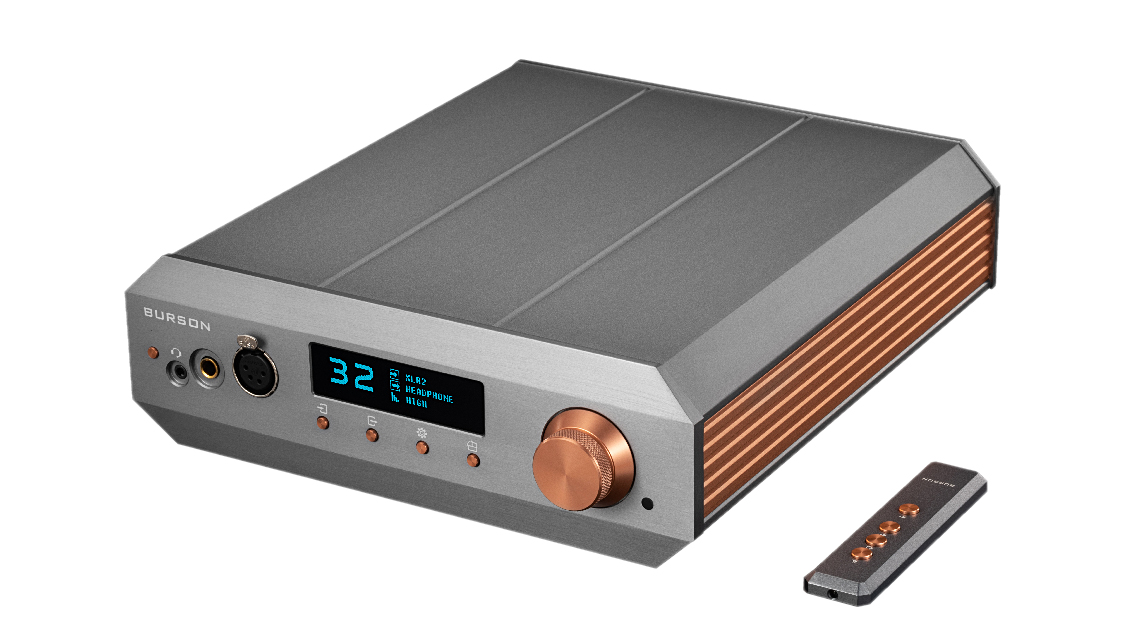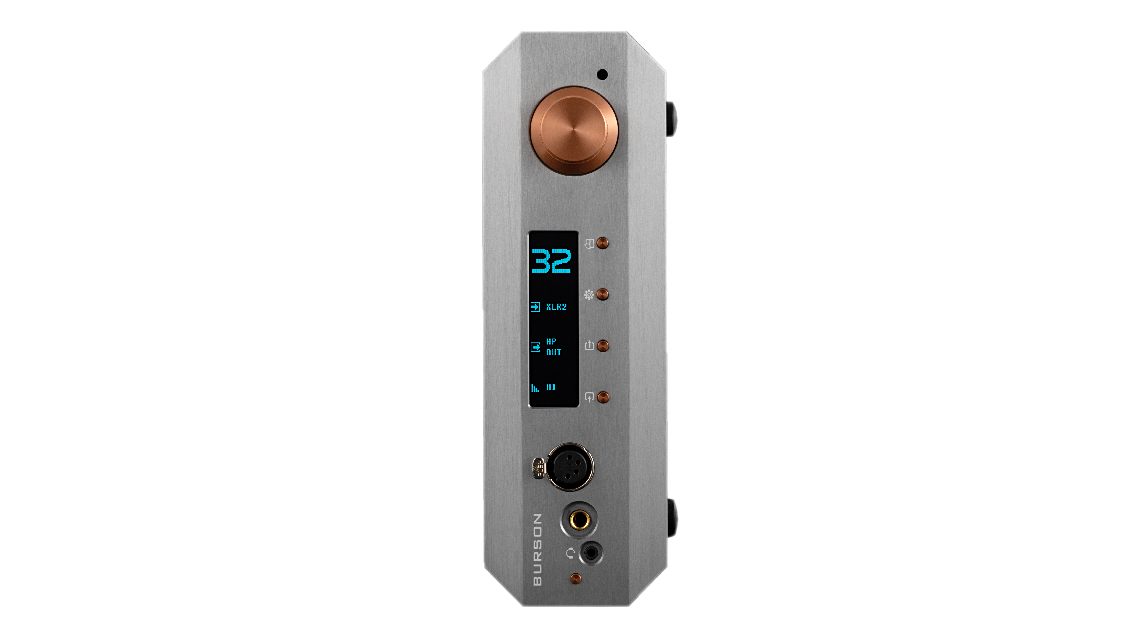The Voyager features two separate and independently powered amplifiers inside, Eliminating cross-channel distortion and creating a lifelike soundstage with powerful dynamics.
With nearly two decades of experience, we have crafted discrete audio op-amps for a diverse clientele, including DIY enthusiasts, recording engineers, and manufacturing partners. The Voyager’s signal path features Burson op-amps at every stage, delivering the renowned Burson house sound—rich, dynamic, and transparent.
The Burson MCPS increases the working frequency to 170khz. Any noise at this frequency is well above the human hearing threshold of 20khz. The result is a pitch black soundstage critical for micro-details to shine through.
The Burson MCPS also converts the original sine-wave energy into a more efficient square wave. In combined with the 170khz frequency, the MCPS charges capacitors much faster. This is the reason why a big capacitor bank is not necessary for our designs. The resulting sound is holophonic with dynamic, accuracy and details even during the most demanding of music reproduction. Furthermore, the resulting sound has a much higher perceived driving power which means a 2Wpc Burson Fun feels even more powerful than a conventional 4Wpc headphone amplifier.
The quality of electricity used in audio amplification is as crucial as the quality of water used in cooking.
The Voyager is equipped with our premium Silent Power Modules (SPM02) in its internal power supply circuitry. These modules ensure an incredibly low noise level, just 0.8nVrms—more than 200 times quieter than conventional power regulators. This superior noise suppression guarantees an exceptionally pure sound stage, allowing every musical note to be tasted in pristine clarity.
With a dynamic range of -112dB, industry aristocrats like Pass Labs and AVM swear by the MUSES72320 volume control. It is thus regarded as the most expensive analog volume controller available.
We go even further by implementing one MUSES72320 with a discrete buffer per channel, eliminating interference between channels.
The impedance number on a headphone’s retail box is not very informative. It comes from a tone test and tends to oversimplify a complex issue.
In practice, headphone impedance varies significantly with different sound frequencies during music playback.
The Soloist Voyager boasts a high current output stage that counteracts these impedance fluctuations, ensuring a more consistent response.
This is why the Voyager’s 10-watt output sounds more powerful than our competitors’, while also being remarkably precise and refined.
specification
Input impedance:
38 KOhms
Frequency response:
± 1 dB 0 – 48Khz
THD:
<0.0015%
Output impedance (Headphone Amp):
0.5 Ohm
Output impedance (Pre Out ):
25 Ohm
Inputs:
2 x XLR2 x RCA1 x Mic Bypass
Outputs:
1 x XLR Preamp1 x RCA Preamp1 x RCA Subwoofer Output1 x XLR Headphone Jack1 X SE Headphone Jack
Weight:
App. 7 kg
Dimensions:
265mm x 270mm x 85mm
Output Power:
16 Ohm:10W (XLR)|5W (SE)|S/N:116dB|Separation:99%
32 Ohm:8W (XLR)|4W (SE)|S/N:111dB|Separation:99%
100 Ohm:3.8W (XLR)|1.9W (SE)|S/N:110dB|Separation:99%
150 Ohm:1.3W (XLR)|0.65W (SE)|S/N:110dB|Separation:99%
300 Ohm:0.64W (XLR)|0.32W (SE)|S/N:109dB|Separation:99.5%
Package Content (Standard):
- Soloist Voyager
- Remote Control
- With SP02 power modules installed
- 24V5A PSU
- V6 Vivid opamp
Package Content (Deluxe):
- Soloist Voyager
- Remote Control
- With SP02 power modules installed
- Super Charger 5A
- V7 Vivid Pro opamp






















Welcome to leave your comments for other users' reference